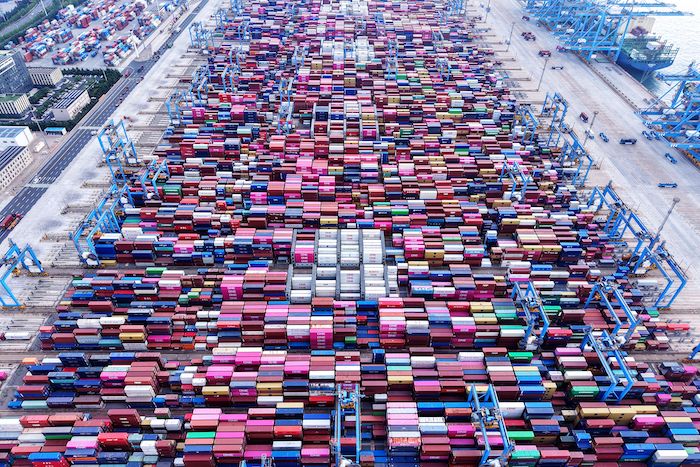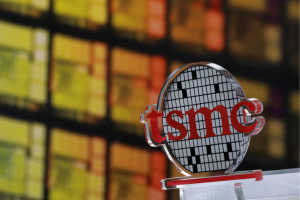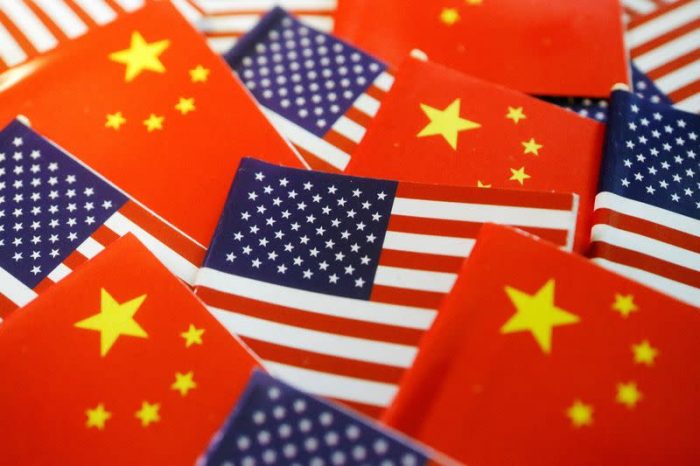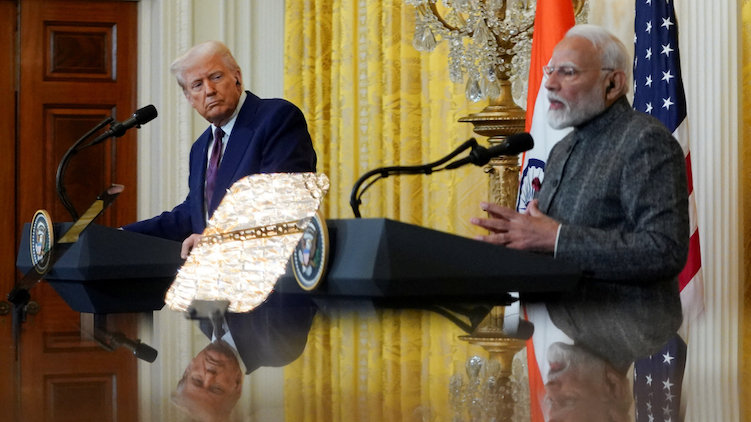Chinese goods shipments shot up last month as firms rushed out exports to ensure they could benefit from the fragile tariff truce between Beijing and Washington ahead of the tariff deadline in August.
Shipments to Southeast Asian transit hubs were particularly strong, Reuters said.
Businesses on both sides of the Pacific are waiting to see whether the world’s two largest economies can agree on a more durable deal or if global supply chains will again be upended by the reimposition of duties exceeding 100%.
ALSO SEE: Nvidia’s Huang Says China’s Military ‘Can’t Rely on US Tech’
Chinese producers, facing weak demand at home and harsher conditions in the United States, where they sell more than $400 billion worth of goods annually, are also hedging their bets and racing to grab market share in economies closer to home.
Customs data on Monday showed outbound shipments from China rose 5.8% year-on-year in June.
“There are some signs that frontloading demand is beginning to wane gradually,” Chim Lee, a senior analyst at the Economist Intelligence Unit, said. “While frontloading ahead of the August tariff pause deadline is likely to continue, freight rates for China-bound shipments to the US have started to decline.”
Trade diversion and rerouting
“Trade diversion and rerouting appear to be continuing, which will attract the attention of policymakers in the US and other markets,” he added.
Imports rebounded 1.1%, following a 3.4% decline in May. The upbeat set of data helped lift market sentiment with the blue-chip CSI300 up 0.2% at the midday trading break, while the Shanghai Composite Index gained 0.4%, nearing its highest level since October.
Analysts and exporters are watching to see whether a deal agreed in June between US and Chinese negotiators will hold, after an earlier agreement reached in May was strained by a series of export controls that disrupted global supply chains for key industries.
Exports to the US grew 32.4% month-on-month, with June the first full month of Chinese goods benefitting from reduced US tariffs, although year-on-year growth remained negative.
Meanwhile, outbound shipments to the 10-member Association of Southeast Asian Nations jumped 16.8%.
Export slump tipped in second half
China’s June trade surplus came in at $114.7 billion, up from $103.22 billion in May.
China’s rare earths exports rose 32% in June from the month before, the customs data showed, in a sign that agreements struck last month to free up the flow of the metals were possibly bearing fruit.
But Chinese negotiators will struggle to talk the US into bringing tariffs down to levels that enable producers to turn a profit, analysts say, warning additional duties that exceed 35% will wipe out margins.
“Tariffs are likely to remain high and Chinese manufacturers face growing constraints on their ability to rapidly expand global market share by slashing prices,” Zichun Huang, China economist at Capital Economics, said.
“We therefore expect export growth to slow over the coming quarters, weighing on economic growth,” she added.
August 12 deadline
Beijing faces an August 12 deadline to reach a durable deal with the White House.
In the meantime, Trump continues to broaden his global trade offensive with new tariffs on other partners.
Analysts warned that those measures could indirectly hurt Beijing by pressuring third countries used heavily for trans-shipments of Chinese goods.
Trump recently unveiled a 40% tariff on US-bound trans-shipments through Vietnam, a move that could undermine Chinese manufacturers looking to reroute shipments and avoid higher duties.
The US president has also threatened a 10% charge on imports from BRICS countries, in which China is a founding member, raising further risks for Beijing.
Backing its fellow BRICS member, China’s soybean imports in June hit a same-month record high, buoyed by a surge in purchases from top supplier Brazil to 9.73 million tons, which Trump has slapped with 50% tariffs.
Imports of US soybeans, meanwhile, were just 724,000 tons.
China’s crude oil imports rebounded last month and reached the highest daily rate since August 2023, after refineries from Saudi Arabia and Iran increased operations. Iron ore imports climbed 8% from May.
- Reuters with additional editing by Jim Pollard
ALSO SEE:
South Korea, India and EU Scramble to Avoid 20-30% US Tariffs
Shanghai Regulator Reassessing Stance on Stablecoins, Crypto
Bridge to Nepal Washed Away as Flash Floods Rock China
Boom in Electric Truck Sales Cuts Demand for Diesel in China
Shares of China’s Solar Firms Jump Amid Moves to End Price War
BYD to Take ‘Full Responsibility’ For Smart Parking Accidents
China Boosts Social Security as Trade Rows Hit Economy, Jobs























